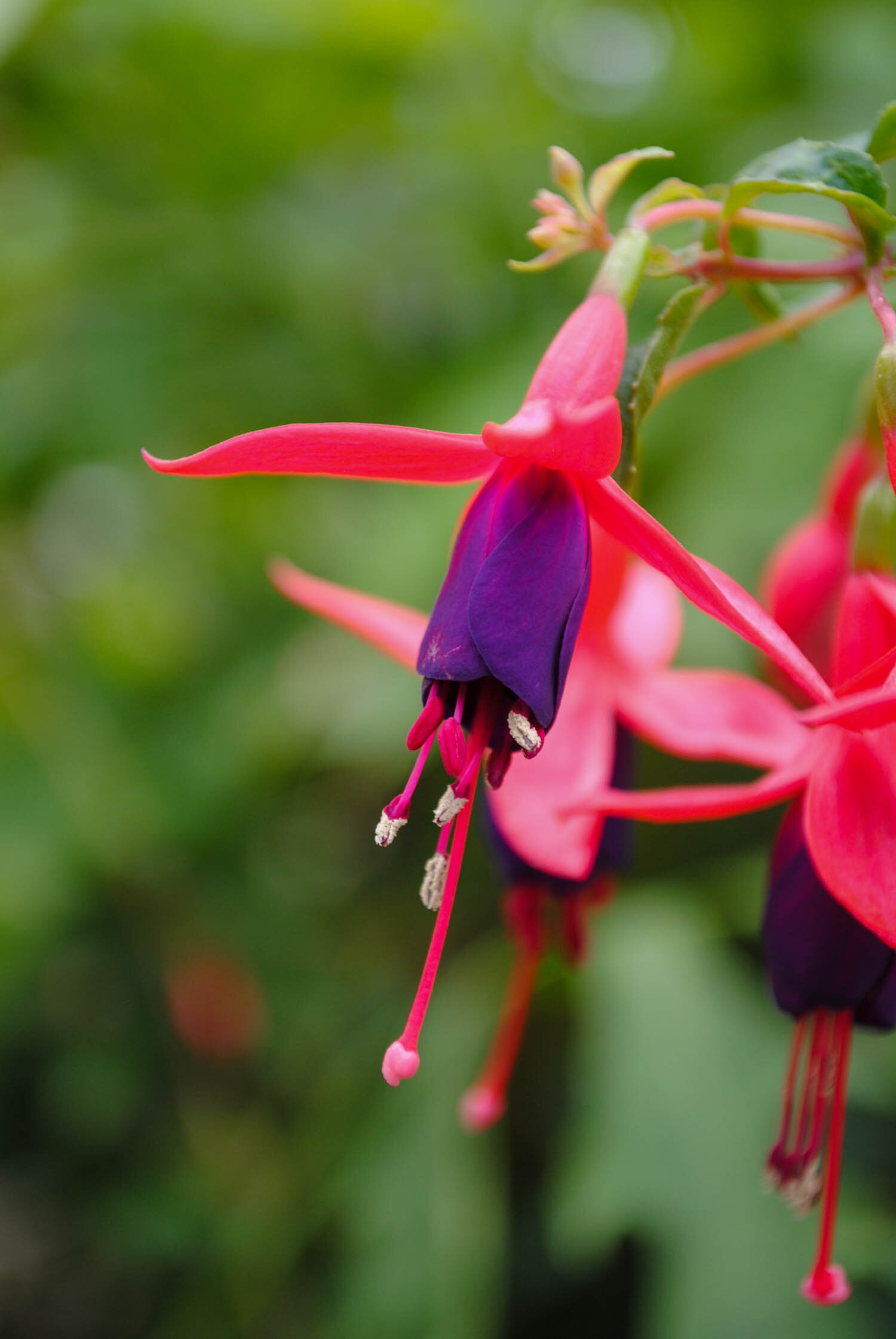This post is 8 of 12 of a series I’m doing this year reflecting back on some of my favorite plants from visiting the JC Raulston Arboretum while attending graduate school at NC State in Raleigh NC.
Of course, it’s September now, but I’ve been sorting through photographs the past few weeks that I took in Augusts past at the JC Raulston Arboretum. I moved to Raleigh, NC in August of 2008, and the arboretum became a home away from home. I would spend some of my first evenings walking around the garden to learn plants that grew well in the area. Each August thereafter would still have that same feeling of learning and exploration as a new school year began. So, I hope you enjoy learning and exploring a few of my favorite plants from the JC Raulston Arboretum from one of the hottest months of the year.
One of the first photographs I took after moving to Raleigh was this looking down shot on a Yucca rostrata, a tough plant that can become a focal point in the landscape. It starts as a skirt of lanceolate leaves and then elongates towards the sky over the years, leaving a thick stem in its wake.
August was the month that I started noticing the warm orange color on Salix ‘Flame’ that would become prominent over the winter months once the foliage dropped. Here you also notice the smoky color of the leaves.
In August the buds on Rostrinucula dependens would start to elongate before flowering a lovely pink.
I hate kudzu for its invasiveness, but the variegated ‘Sherman’s Ghost’ on the back patio created nice shade. A tough spot deserves a tough plant I suppose.
Years ago, I saw a curious vine loaded with red samaras and yellow flowers at Callaway Gardens in Georgia with no idea of its identity. At the arboretum I learned it as Heteropterys glabra, or redwing.
A close up of the beautiful fruit of Heteropterys glabra
Another amazing vine I saw at the arboretum was Mucuna cyclocarpa, or purple jade vine. I love members of the bean family that have incredible flowers, and this new-to-me vine wasn’t an exception. If you grow this species, just be aware that some have an allergy to touching the hairs on the plant.
In the Lath House at the arboretum, Hydrangea involucrata ‘Wim Rutten’ Blue Bunny(TM) bloomed well into August with its billowy lacecaps. This Hydrangea supposedly blooms on new wood, a plus for areas where winter bud damage is an issue.
Many geophytes would start flowering after summer’s crescendo as witnessed here by the geophyte border.
One of my favorite bulbs for August is Lilium formosanum. My friend Jimmy Williams told me years ago that there are few plants that reach such height in the middle of summer and bloom so effectively as this lily.
Lycoris or spider lilies would start popping in August. I loved the pink-to-purple-to-blue fade on this Lycoris sprengeri.
A new Lycoris species to me was the cream-colored Lycoris anhuiensis. I quite liked how it was planted to emerge through this groundcover of Sedum emarginatum ‘Eco Mt. Emei’.
The star-shaped, two-toned flowers of Gladiolus 'Flevo Kosmic' were out of this world!
The sweet smell of Hedychium flowers is so welcome in August. They remind me of swimming in our pool back home in Tennessee where the fragrance would waft across the water in the evenings. ‘White Starburst’ has a beautiful spiral of flowers atop 5–6 foot stems.
I really didn’t pay much attention to turk’s cap when in Raleigh, but now that I live in Texas I see it everywhere. It’s a durable, tough, native perennial that attracts Ruby-throated Hummingbirds. This clump is ‘Big Momma’, a cultivar developed by my friend Greg Grant.
A close up of the flowers on Malvaviscus arboreus var. drummondii 'Big Momma'
I was blown away when I saw this Fuchsia ‘Sunihanf’ Angel Earrings® thriving in the lath house because this genus doesn’t do well in the south at all. This cultivar is much more heat tolerant and is certainly on my wish list for trying in Texas.
I’ve written before about my love of Titanotrichum oldhamii. In the lath house this gold woodland foxglove was thriving and starting to bloom for fall.
This sheet of flowers on Sedum ‘Pure Joy’ is… well… pure joy.


















